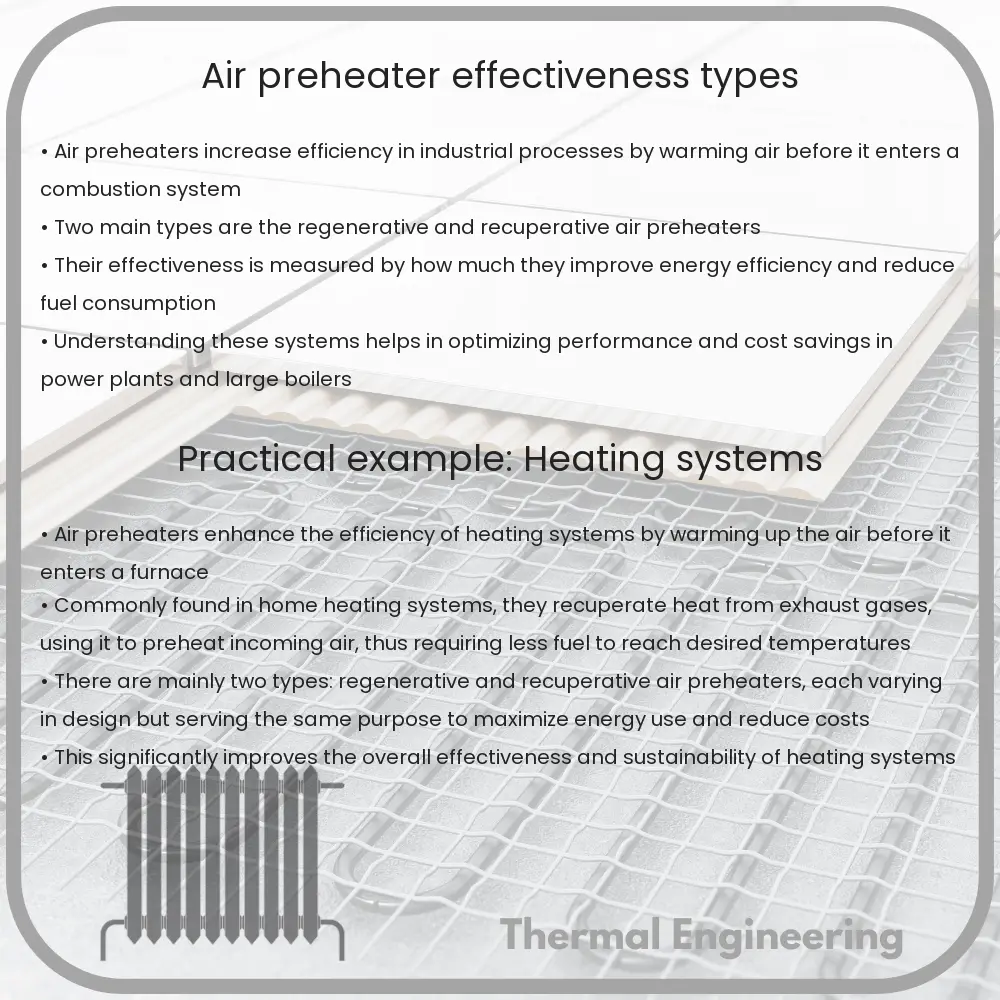Learn about air preheaters, devices that heat air before processes like combustion to enhance thermal efficiency in industrial applications.

Understanding Air Preheaters: Their Effectiveness and Types
An air preheater is a device designed to heat air before another process (for example, combustion in a boiler) with the primary objective of increasing the thermal efficiency of the process. They can be used in a variety of devices including power plants, steam generators, and heating furnaces. This article explores the effectiveness and various types of air preheaters.
Effectiveness of Air Preheaters
The effectiveness of an air preheater is measured by its ability to increase the temperature of the air before it enters the next processing unit. The efficiency gain contributes significantly to energy conservation and cost reduction in industrial processes. Effectiveness is influenced by several factors such as the heat transfer area, airflow rate, and temperature gradient between the exhaust gases and the incoming air. A key formula often used to describe the effectiveness of a heat exchanger, which includes air preheaters, is given by:
\[ \text{Effectiveness} (\epsilon) = \frac{\text{Actual Heat Transfer}}{\text{Maximum Possible Heat Transfer}} \]
This can also be expressed as a function of the heat capacity rates and the heat exchanger geometry.
Types of Air Preheaters
There are primarily three types of air preheaters used in industrial applications: regenerative, recuperative, and hybrid. Each type has its own advantages and suitability depending on the requirements of the operation.
- Regenerative Air Preheaters: Also known as rotary heat exchangers, this type of air preheater features a rotating cylinder filled with a matrix of materials that absorb heat. As the cylinder rotates through the hot gas stream, it absorbs heat and then transfers it to the cold air stream. This type is commonly used in power plants because of its ability to handle large volumes of air and gas.
- Recuperative Air Preheaters: These operate by having a fixed barrier (like tubes or plates) through which heat is transferred from the hot gases to the cold air by conduction. Recuperative air preheaters are more compact and typically used in smaller, less variable systems.
- Hybrid Air Preheaters: Hybrid systems combine elements of both regenerative and recuperative air preheaters to maximize efficiency and performance. These are less common but are used when specific conditions require the benefits of both types.
Conclusion
Air preheaters play a critical role in enhancing the efficiency of thermal systems by recovering heat from exhaust gases. Understanding their effectiveness and the different types enables industries to choose the most suitable type for their specific needs, leading to better energy conservation and cost-effectiveness. As technology advances, the performance of air preheaters will continue to improve, contributing further to sustainable industrial practices.